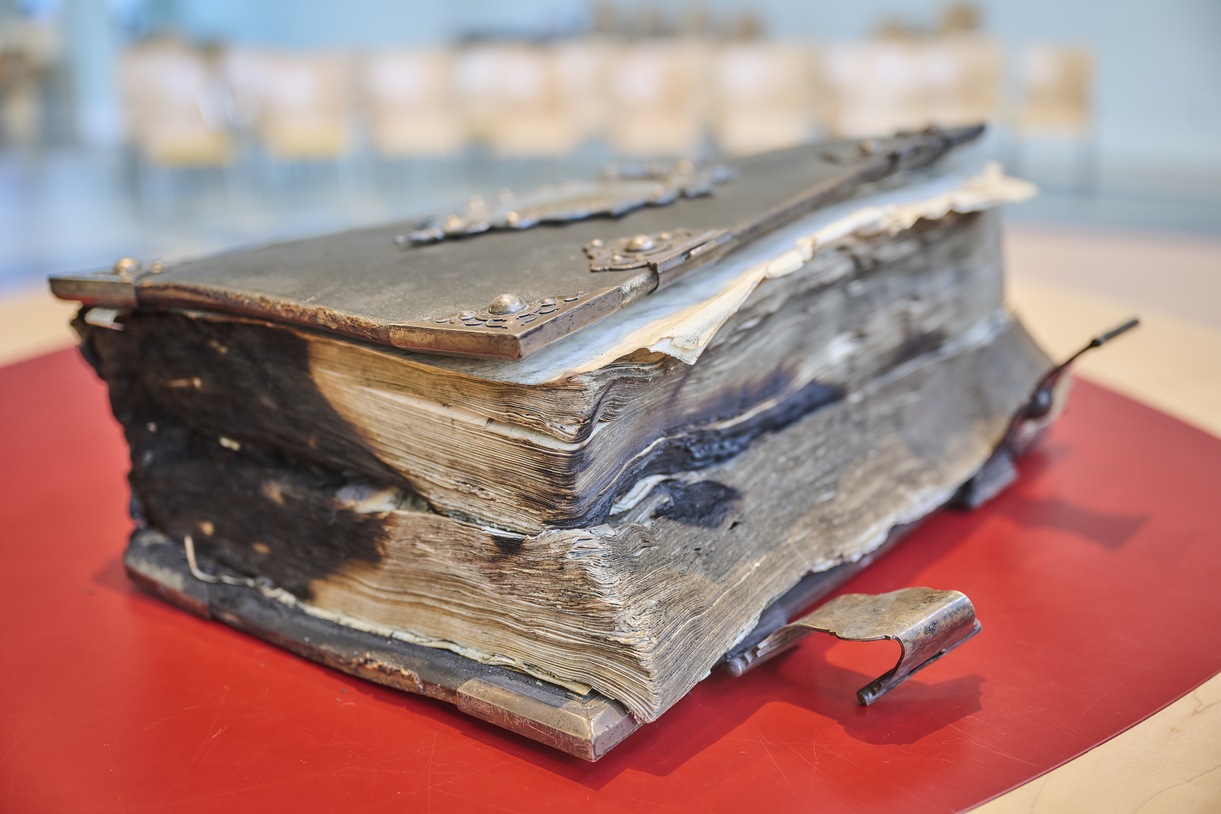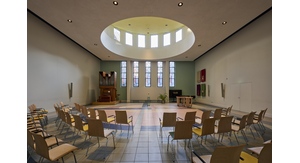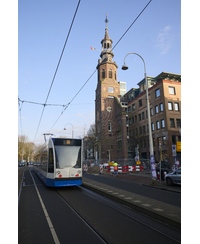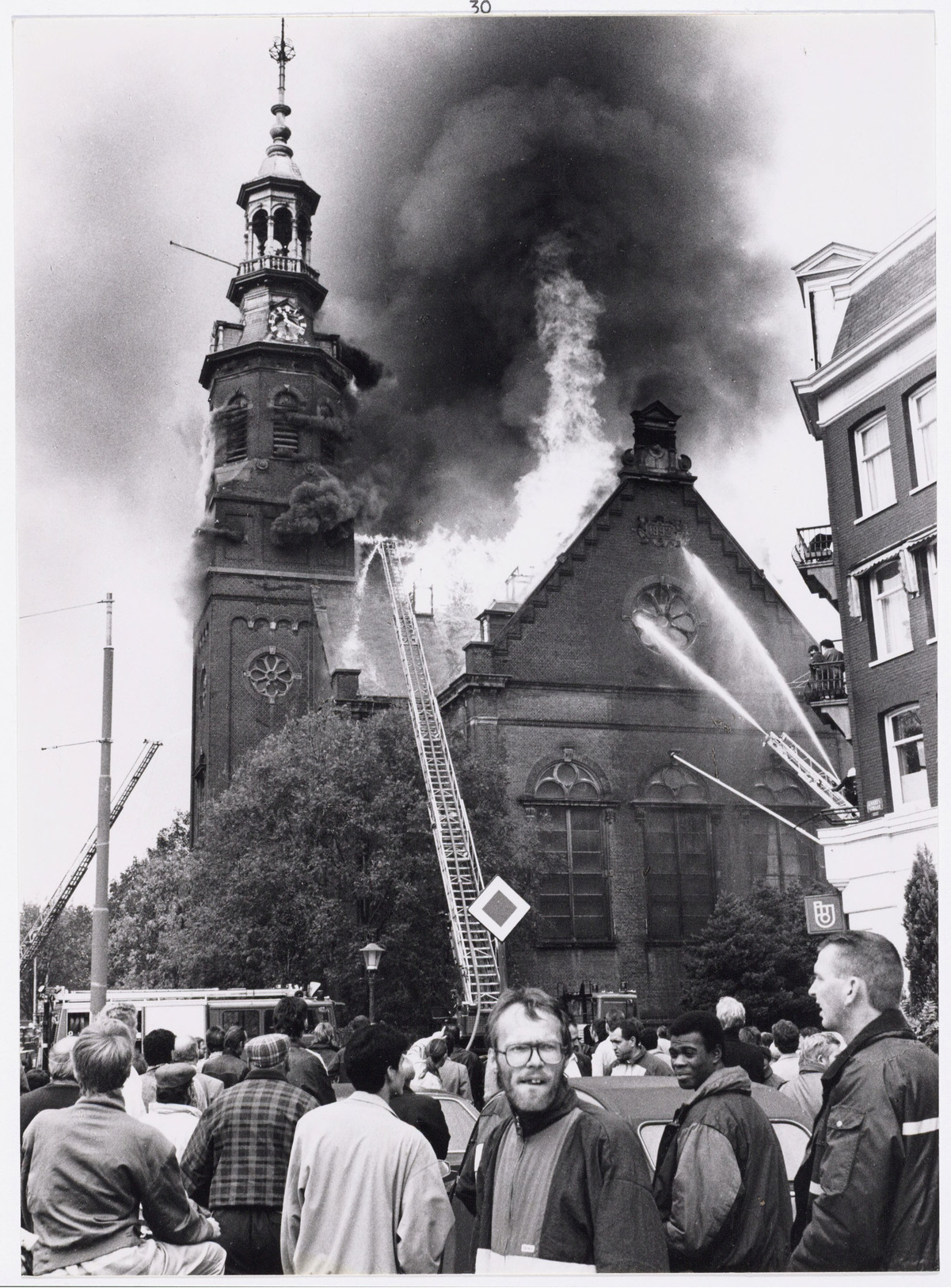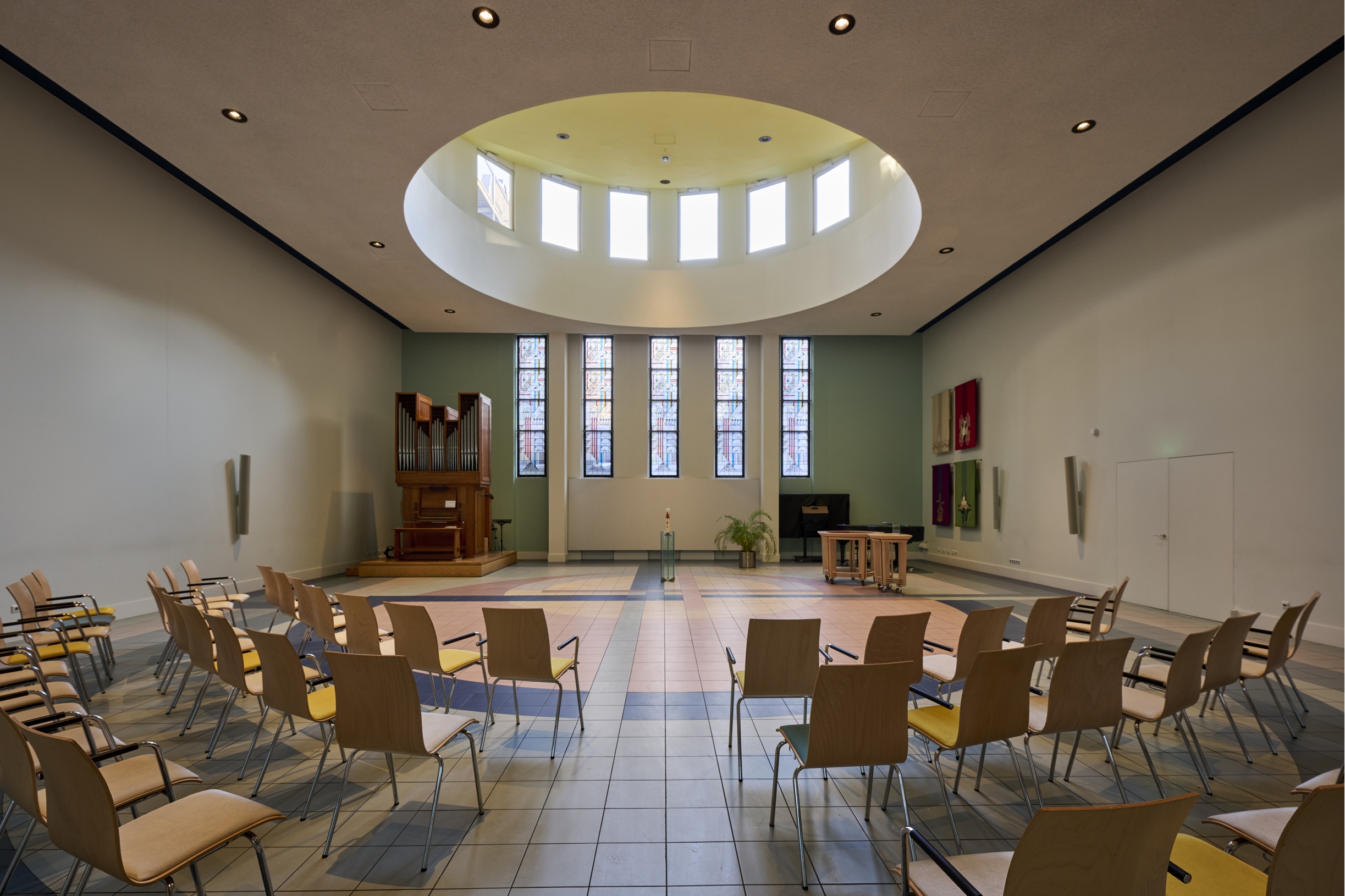In 1989, a disastrous fire raged in the Muiderkerk. The consequences are dire.
Location
Muiderkerk
Linnaeusstraat 37
Type
Church
Religious community
Protestant Church in Amsterdam, formerly known as Dutch Reformed Church in Amsterdam
Object
Burned State Bible
Maker and date
Nederlandse Bijbelcompagnie
1851-1891
Visit
On display in the church
Fire in the Muiderkerk
On the morning of 31 October 1989, the clock in the Muider Church tower remains stopped at nineteen past eleven. The cause is a devastating fire in the church, which has now also reached the tower. In an attempt to save the church, as many as 32 fire hoses are deployed. After two hours, firefighters can finally give the signal 'fire master'. Unfortunately, the church building is so badly damaged that only the tower can eventually be saved.
One of the objects that miraculously survives the fire is the Bible on the pulpit. Its black pages can be seen as a symbol of the disaster that struck the church. Indeed, they prove to be not only a symbol of the end, but also mark a new beginning.
A changing church landscape
The loss of the original Muiderkerk is not an isolated event. Fires, newly built houses of worship, demolition: Amsterdam's church landscape has always been subject to change over the centuries. The late nineteenth century is one such period with many changes. The 'Dolerenden' (later called Reformed) secede from the Nederlandsche Hervormde Kerk and build no fewer than six new church buildings in Amsterdam in six years. In response, the Reformed also start building again. A real rivalry ensues. In 1892, for instance, the Nederlands Hervormde Muiderkerk rose up - much to the anger of the Reformed - just a few hundred metres from the then newly built Reformed Funenkerk.
The Reformed Funen Church at 16 Zeeburgerstraat before it was demolished in 1975. Photo was taken on 14 June 1974. In the late nineteenth century, in addition to the Funenkerk, the Reformed also built the Keizersgrachtkerk, the Boomslootkerk, the Buiten Amstelkerk, the Raamkerk and the Schinkelkerk.
A new church building
The Muiderkerk and Funenkerk have long been competitors. It is therefore remarkable that in the 1970s these two community's were the first to seek each other out in Amsterdam. This is how the reformed-Dutch Reformed 'Muider-Funen Church' came into being. In 1975, the Funenkerk was demolished. With the fire in the Muiderkerk, the community lost both striking buildings in the late 1980s. Although unwanted and tragic, the fire allowed the community to design a new, contemporary church building. A building that is no longer Reformed or Dutch Reformed, but a reflection of what this community stands for: connection and resilience.
Vera Mijnheer
Employee Protestant Church Amsterdam
In collaboration with
Jan Dijkhuizen
Church member Muiderkerk
Flip Noordam
Church member Muiderkerk
Wytske Osinga Zuijdendorp
Church member Muiderkerk
Last edited
July 15, 2025
Burned Bible, Nederlandsche Bijbel Compagnie, 1851-1891, leather, paper, copper, silver, 44 x 29 x 11 cm. Collection Protestant Church Amsterdam. Photo Robert Westera.
Exterior and interior: photo Robert Westera.
Fire in the Muiderkerk, Frans Busselman, 1989, photo. Collection Stadsarchief Amsterdam.
Funenkerk on Zeeburgerstraat, Archive Dienst Ruimtelijke Ordening, photo Department B, 1974. Collection Stadsarchief Amsterdam.
Church hall of the Muiderkerk, tile floor: Berend Hendriks, furniture liturgical centre: Pim van Dijk, Strikwerda van den Heuvel Architects. Photo Robert Westera.
Auteur onbekend, geen titel, NRC Handelsblad 27 (01-11-1989) 3.
Groot, A. de, ‘De Muiderkerk: protestantse kerkbouw in Amsterdam aan het eind van de 19e eeuw’, De Sluitsteen: tijdschrift voor negentiende- en twintigste-eeuwse architectuur en toegepaste kunsten 1 (1990) 3-21.
Mathies, E., ‘Gemeente niet weg te branden. Amsterdamse Samen-op-weg-kerk houdt moed’, Trouw 13862 (28-12-1989) 10.
Wesselink, H.E., Een sterke toren in het midden der stad: Verleden, heden en toekomst van bedreigde Nederlandse kerkgebouwen (Amsterdam 2018).


